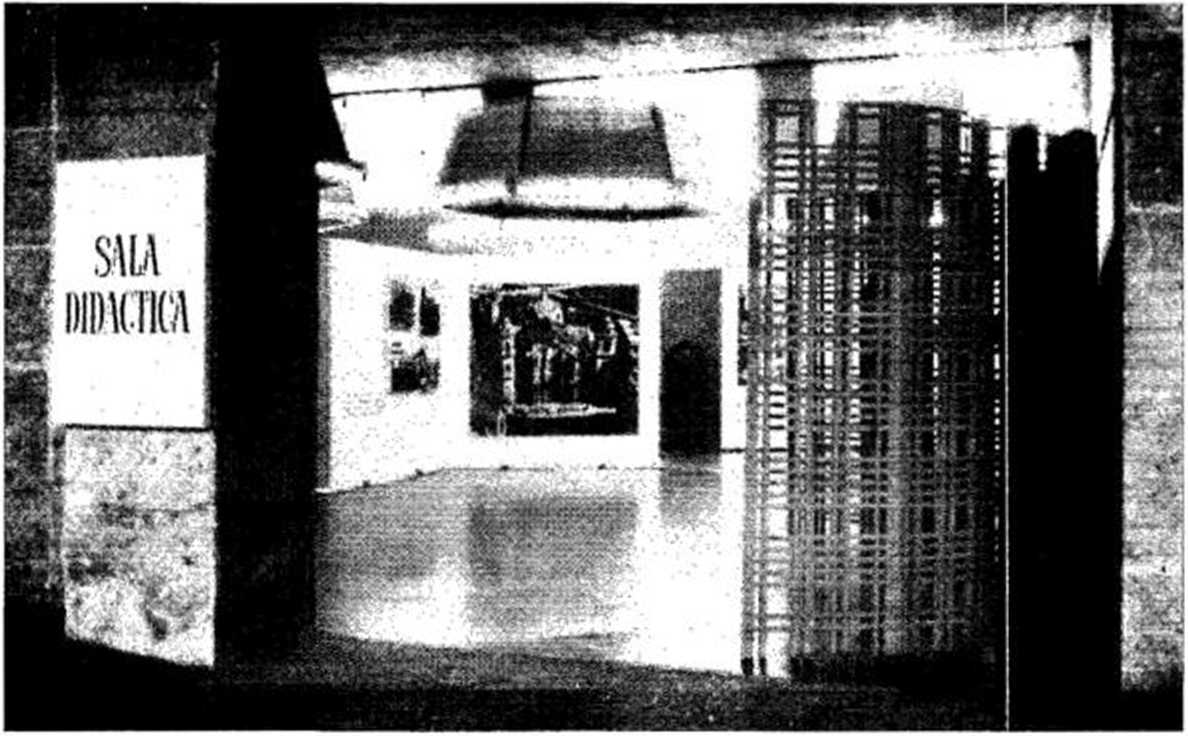5134939233
Art education room in the National Museum of Cuba, Hayana
In March 1968, a room specially prepared for childrcn and for visitors of a poor cul-tural standard was opened in the National Museum. The museuirfs Educational Department regarded an exhibition of this kind as a further necessary cxperiment in order to reach a public untutored in matters of art. Previously, special courses had been organized for specific groups of workers, but the results were not quite as encou-raging as had been hoped, sińce experience showed that lectures are not sufficiently attractive. In the case of children, confronting them with a series of pictures, without any preliminary explanation, in most cases completely failed to produce results. Classes in art practice proved successful in training the children, but not the best way to encourage them to go on to visit the galleries. Some morę direct means was needed to familiarize so many-sided a public with the plastic and graphic arts and arouse in it a modicum of interest.
What are stylcs ? How should a piece of sculpture beappreciated ? What is the role of an industrial designer ? What is a museum ? Such were some of the many questions to which the room must give an answer; and the fundamental problems to be overcome were: how the answers could be fitted into a smali room which should be attractive, the selection of the most appropriate exhibits, the texts to accompany them, and above all the level of the display as a whole.
After some months of preparation the results obtained could not at any time be regarded as finał, but constituted so much experience, likely to lead to something better, or cvcn to a complete change in the case of failure.
The room (fig. 13) is divided into four sections. The first one, very succinctly, cxplains the various types of muscums, and in particular the purpose of museums deyoted to the plastic and graphic arts; the difference between an original and a repro-duction and the yarious uses to which the latter are put. (fig. 14). The second section is intended to show the widc rangę of these arts by exhibiting some examples of archi-tecture, sculpture (fig. //), painting, glassware, mosaics, furniture, ceramics, gold and silver ware, enamel ware, iron work, posters, photography, industrial design (fig. 16). In each case emphasis is placed on how to appreciate the works, painting in particular, sińce it is the art best represented in the National Museum.
The third section is morę dircctly concerned with formal appreciation, through the analysis of the different elements of the picture: linę, composition, colour, tonę, vol-ume and texture (fig. 27). This is carried still further in the fourth section, in which
13. Museo Nacional de Cuba, Habana. En-trance to the art education room.
ij. Entrec dc la sallc didactique.

222
Wyszukiwarka
Podobne podstrony:
kievfacebelt Fig.562 Helmet face mask and beli mounts from Kiev, National Museum of ihe Hillary of t
New Forms Taschen 091 Fumihiko Maki National Museum of Modern Art Kyoto. Japan, 1983-86 Fumihik
Since the National School of Public Administration was established, U has educated - including the p
Zdjęcie134(3) Ihe finał excavation ofthe Tollund Man at the National Museum ofDenmark in 1950 s
by Alexander II came too late. The leniency of his rule, the Italian war, hopes based on the nationa
Taken from the name of one of the extraordinary literary works belonging to the national hero of the
PICT0606 resize Kod powinien być łatwy do testowania A study conducted by NIST (The National Institu
slajd06 (5) Voł«m« 106, Mufli# 1, J*nu*ryTOSiJournal of Research of the National IrsstftuM of Standa
THE NATIONAL CHOIR OF RUSSIA NAJPIĘKNIEJSZE GŁOSY ROSJI
Sarajewo plan VOGOŚĆA ZENICA TUZLA S.S. Kranjćevića HOLIDAY INN HOTEL NATIONAL MUSEUM OF BIH HI
104 B. Vogt, F. Nassery Fot. 22. Muzeum Narodowe Phot. 22. The National Museum Fot. 23. Dom Śląski P
H. i:%AiPł?M j ICĄ- Social aDu Eoonornic Plannin;- . Nrom the lianifesto of the National Counoil of
National Park of NewZealand The national parks of New Zealand are 14 protected areas. The national p
The Great Seal It is the national emblem of the United States, adopted on 20“ June 1782 by resoluti
The National Anthem of the USA The author - a poet-layer Francis Scott Key composed the national ant
enhances glioma virotherapy by inhibiting innate immune responses. Proceedings of the National Acade
więcej podobnych podstron